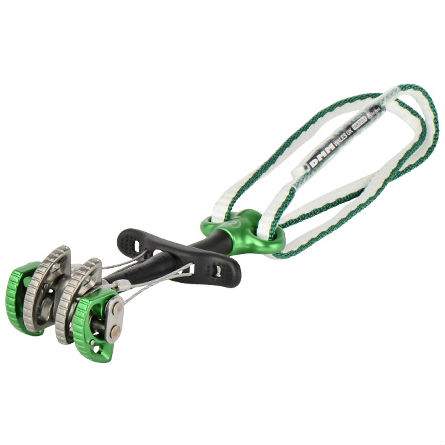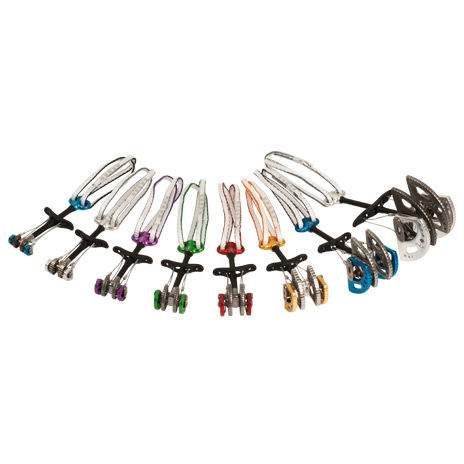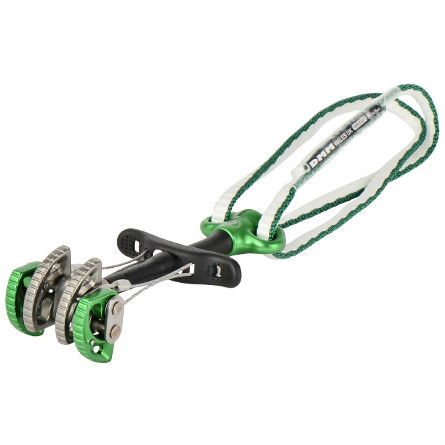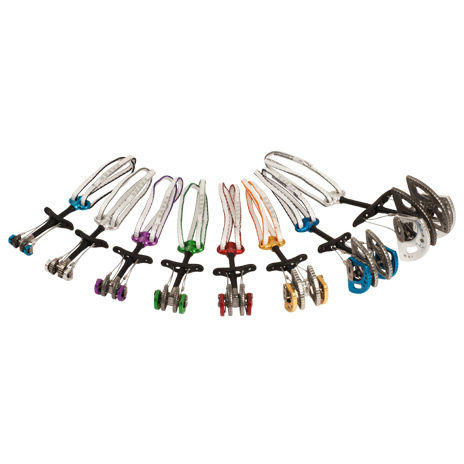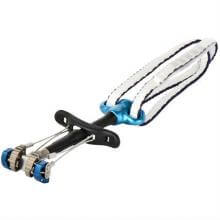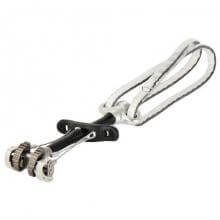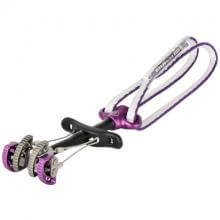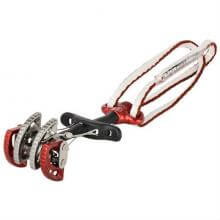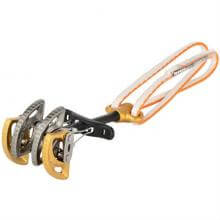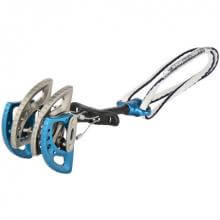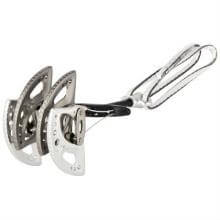Dragon 2 2015
Description
A couple of years ago we decided to expand our cam range by producing a single stem design with a dual axle. A simple enough proposal you might think, but not if you want to make a cam that would stand head and shoulders above the rest.
The main advantage of the single stem design with two axles is that it allows a greater range for each camming unit. We have kept Ray Jardine’s original 13.75° constant camming angle, which gives the perfect balance between holding power and range. The benefits of this increased range are obvious, but we knew we could push things to another level by focusing on other aspects of the design.
By introducing the hot forging process for the cam lobes (in sizes 1 to 6) we were able to produce a highly sophisticated shape in A6082 alloy for the added bite, and make significant weight savings.
We have used strong springs to make the cam sit more securely, it also means they are more resistant to being pulled out of slippy placements and the potential for ‘walking’ is reduced.
Regardless of all these technical advantages, the really amazing thing is how these cams feel in your hands. In terms of handling qualities and ease of use Dragon Cams are a true revelation.
Part of that is down to the patented lightweight forged thumb grip. The grip and trigger combination sits perfectly in the hand. Even when you’re really pumped, or wearing full winter gloves it handles like a dream. It also incorporates the double extendable 8mm Dyneema sling which means you only need one biner for each cam placement – another significant weight saving.
Retail price
When you click a link below and then checkout online, no matter what you buy (climbing gear or not), we get a small commission that helps us keep this site up-to-date. Thanks!
Weight (g / oz)  Weight (g / oz)In grams and ounces, the weight, as stated by the manufacturer/brand. | 106.0 g / 3.74 oz |
| Cam Head | 4 lobes, double axle |
| Offset | No offset |
| Stem | Flexible single stem |
| Sling | x8 mm Dyneema (double sling loop) |
| Camming Angle | 13.75° (angle is consistent throughout) |
| Active Strength | 14 kN |
Cam Range (mm / in)  Cam Range (mm / in)In millimeters and inches, the maximum dimensions of the cam lobes when shut tight and fully extended. Since the "usable" range is so debatable, all manufacturers now list the full dimensions to avoid selling themselves short. For offset cams, we'll list the max dimensions possible and then afterwards list each of lobe dimensions. | 24.0 - 41.0 mm (0.94 - 1.61 in) |
| Materials | Main Material: A6082 Alloy |
| Certification | CE, UIAA |
No reviews yet.
These cams are best suited for free climbing, especially alpine climbing where you want to move light and fast. We could not think of a better cam for the Sierra. The extendable sling makes it easy to add a little length to your placements to cut down on walking and to help out with wandering pitches.
The DMM Dragon cams have been around for a few years. They are distinctive for a couple of reasons. First is the extendable sling. The sling, and attached cam, are racked like an alpine draw, with an 8mm Dyneema sling double looped through a carabiner and hung on a gear loop. Once you place a cam, most of the time you want to extend it by adding a sling or quickdraw. The Dragon Cam is built to extend so you can either just unclip on side of the sling and extend it out, or in the case of deep crack or placement out of line with where you’re climbing, you can add a draw to extend even further. This can cut down on the amount of hardware (and weight) you have to rack and carry. It also adds some handy versatility when the climbing gets interesting.
After all the hype since their launch, Dragons probably need no introduction. The clever stem arrangement in Camalots is patented so DMM use a conventional single stem but save weight with hot-forged cams and have an extendable sling courtesy of a very clever thumb termination. Dragons sat very nicely in the hand and the thumb termination felt very secure – no fumbling around here. I found the double sling could sometimes be a little fiddly but I did end up using it a lot, even on grit, and I think it would really earn its keep once I got more used to it. If there is a downside it is that, like Camalots, they seem to have slightly weaker springs. If I had only had one type of unit on my rack I may not have noticed it but placing different brands in quick succession made me realise that slight difference. All in all though, Dragons have raised the bar from where Black Diamond set it and these are excellent units. To cover a range from 19-100mm (actually 20-114mm) means carrying 6 units weighing of 941g.
The Dragons hold their own against both the Wild Country Helium Friends and the Black Diamond C4s. The head design is almost a carbon copy of the Black Diamond C4, so if you like or are used to BD’s cams, you will likely enjoy the Dragons.
As mentioned earlier, almost all the meaningful innovation in the Dragons is located in the stem rather than the head. That is not necessarily a bad thing, however, and if you are a Wild Country Friends or Metolius devotee, the Dragons will fill in the gaps in your sizes nicely and make great supplementary cams.
The versatility that the sling design provides makes them an attractive option for anyone who climbs aid as well as free, but doesn’t want to have two dedicated racks and is looking for gear to do double duty. While I really enjoyed the extendable sling, I can see it requiring a little getting used to for some people. If you worry you are one of these people, then buy or borrow a single cam and feel it out, otherwise I would recommend them without hesitating.
The DMM Dragon Cams feature a twin-axel camming design originally used on the Black Diamond Camalots. Tony Christianson originally designed and patented the twin-axel while working for, back in the day Chouinard Equipment, now known as Black Diamond Equipment. The patent on this design expired in the USA in 2005 and in Europe in 2006. Score for DMM since they have been developing the Dragon Cams for over two years!
This is a Dragon Cam testing video but the way of testing is not traditional, its something new. it's well worth watching.
This long but informative video goes behind the scenes to the DMM lab, shows how the Dragon Cams came to be and discusses the quality of the product.
This video goes behind the scenes to the DMM lab, shows how the Dragon Cams came to be and discusses the quality of the product.

